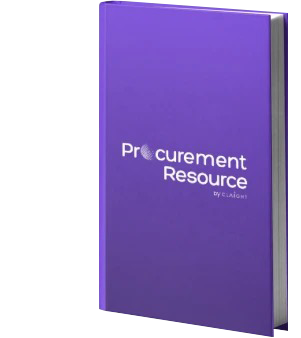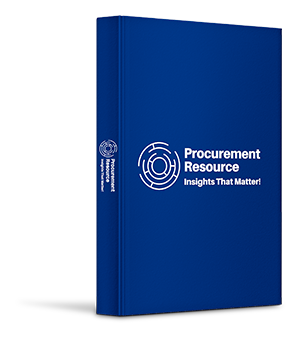Reports

Global Epoxy Resins Market: by Application; Country Overview; Value Chain Analysis; Production Process; Trade Analysis; Cost Structure; Market Dynamics: Drivers & Constraints, Industry Events, Innovations & Trends, SWOT Analysis, Porter’s Five Forces; Industry Best Practices: Sourcing Strategy, Procurement Model, Contract Structure, Negotiation Levers, Pricing Model; Key Supplier Analysis, 2024-2032
Epoxy Resins Industry Report by Regional Category Spend, Price Analysis, Key Demand, and Price Indicators, and Best Buying Practices
The global Epoxy Resins market reached a value of about USD 6.33 billion in 2021. The industry is projected to grow at a CAGR of around 6.1% in the forecast period of 2022-2027 to reach a value of about USD 9.23 billion by 2027.
The global Epoxy Resins industry report gives a comprehensive analysis of the industry, including key segments, trends, drivers, restraints, the competitive landscape, and other essential market aspects. The market is driven by rising demand for coatings, adhesives, and composites in various applications. In the industry report, the key demand indicator is the highest category spender by region—Asia Pacific.
Industry Definition and Segmentation
Epoxy resin is a volatile prepolymer and also is a polymer that includes epoxide groups. They are made up of a family of essential components, and cured end products are known as epoxy. These resins react either by themselves or with various co-reactants like amines, phenols, and thiols when catalysts are present. Epoxy resin is used in a wide range of industrial applications, and it has multiple properties such as mechanical qualities and heat and chemical resistance. The Epoxy Resins industry report comprises segments by application (Electrical & Electronics, Powder Coatings, Marine & Paints, Civil Engineering, Can & Coatings, Automotive Coatings, Composites, Adhesives) and region (North America, Europe, Asia Pacific, the Middle East, and Africa, and South America).
The Asia Pacific Region is Propelling the Growth of the Industry
The Asia Pacific region has the largest share in the industry as China is the primary producer of electronics and one of the significant regions in the construction sector. Furthermore, growing governmental initiatives give rise to infrastructural activities driving market growth.
The industry is being driven by the rising demand for products in the paints and coatings sector. In the construction sector, laminated wood is commonly used for flooring, windows, roofs, walls, and decks, further boosting the market growth. As a result, the increasing construction activities promote the need for the product. In addition, it is used in various sectors, including adhesives, composites, and electronic encapsulation. Due to the multiple properties of the substance like corrosion resistance, high thermal stability, superior mechanical strength, remarkable toughness, prolonged durability, chemical and moisture resistance, and exceptional adhesion, it is gaining traction among end-use sectors. It is appropriate for protecting metals and other surfaces because of its features and abilities of rapid drying, toughness, great adhesion, adequate curing, abrasion resistance, and excellent water resistance.
However, the adverse effects of the hazardous gases produced in the product's manufacturing and its non-biodegradable nature are hampering the market's growth.
Best Procurement Practices
The global Epoxy Resins industry report by Procurement Resource gives an in-depth analysis of the best buying practices followed by major global Epoxy Resins regions, such as engagement models, contract terms, and buyer and supplier negotiation levers, among others.
Category Management Studies
epoxy manufacturers do not typically sell epoxy resins in a form usable by smaller end users. Another group of companies buys epoxy raw materials from the major producers and then compounds (blends, modifies, or otherwise customises) epoxy systems from these raw materials. These formulators create the bulk of epoxy systems supplied, accounting for more than 60% of the epoxy market's total worth. These formulators can change epoxies in various ways, including adding mineral fillers (talc, silica, alumina, etc.), flexibilities, viscosity reducers, colourants, thickeners, accelerators, adhesion promoters, and so on. These changes are being made to cut costs, increase performance, and complete processing more convenient. As a result, the average formulator offers hundreds, if not thousands, of different formulations, each one suited to the needs of a specific application or market. Epoxy resin raw ingredients are mainly produced from petroleum today, while apparent plant-based alternatives are becoming commercially available (e.g., plant obtained glycerol that is applied to make epichlorohydrin).
Various Applications of the Product, Further Driving the Procurement of Epoxy Resins
The market is being propelled by the wide range of applications of the product. Epoxy coatings are expected to become more popular as demand from the electric vehicle (EV), marine, and aerospace sectors grow. Epoxy resins also provide better mechanical performance in wind turbine blades, notably tensile and flexural strength. As a result, market development is likely to be aided by increased adoption of this resin in the wind power industry. Rising market demand for readily available and processed foods and beverages in developed and developing countries is pushing up packing needs. Can interior coatings using epoxy resins be used to increase the shelf life of canned foods and drinks. These are commonly used to retain the flavour, texture, and colour of F&B items and provide corrosion protection. Moreover, the development of bio-based epoxy resins generated from natural polyphenols and natural oils with similar mechanical qualities to petroleum-based adhesives is expected to boost market growth. The potential usage of bio-based epoxy resins as a substitute for petroleum-based materials in the aviation sector is expected to boost epoxy resin market growth.
The regional markets for the industry can be divided into Europe, North America, the Asia Pacific, South America, and the Middle East and Africa.
Key Industry Players Mentioned in the Epoxy Resins Industry Report
- Kukdo Chemical Co., Ltd.
- Jiangsu Sanmu Group
- Hexion Inc.
- Huntsman Corporation
- Olin Corporation
Market Landscape
The epoxy resins market is fragmented mainly due to several different companies. These companies are introducing new products and broadening their market reach. The quality of products supplied, product development skills, and new technologies employed in product formulations are all factors that critical competitors in the industry compete on. Established businesses invest in developing creative and long-term solutions for creating unique and improved resins to gain a competitive advantage.
Key Initiatives by Companies
- Hexoin Inc stated in November 2021 that it had reached a binding deal with Westlake Chemical Corporation. Hexion Inc. will sell its global epoxy business to Westlake Chemical Corporation for roughly $1.2 billion. Following usual closing conditions, the deal is expected to close in the first half of 2022.
- Covestro completed the acquisition of Royal DSM's Resins & Functional Materials division (RFM) on April 1, 2021. Covestro's range of sustainable coating resins will rise due to the purchase.
1. Executive Summary
2. Global Epoxy Resins Market Snapshot
2.1. Epoxy Resins Market Outlook
2.2. Epoxy Resins Industry Analysis by Application
2.2.1. Electrical & Electronics
2.2.2. Powder Coatings
2.2.3. Marine & Paints
2.2.4. Civil Engineering
2.2.5. Can & Coatings
2.2.6. Automotive Coatings
2.2.7. Composites
2.2.8. Adhesives
2.3. Regional Overview
2.3.1. North America
2.3.2. Europe
2.3.3. Asia Pacific
2.3.4. Latin America
2.3.5. MEA
3. Impact of Recent Events
4. Epoxy Resins Value Chain Analysis
5. Epoxy Resins Production Process
6. Trade Analysis
7. Major Risk Factors in Sourcing
8. Epoxy Resins Cost Structure
9. Epoxy Resins Price Analysis
10. Key Demand Indicator Analysis
11. Key Price Indicator Analysis
12. Epoxy Resins Market Dynamics
12.1. Drivers & Constraints
12.2. Industry Events
12.3. Innovations & Trends
12.4. SWOT Analysis
12.5. Porter’s Five Forces
12.5.1. Buyer Power
12.5.2. Supplier Power
12.5.3. Threat of New entrants
12.5.4. Threat of Substitutes
12.5.5. Industry Rivalry
13. Feedstock Market Analysis
13.1. Market Overview
13.2. Price Analysis
14. Industry Best Practices
14.1. Sourcing Strategy
14.2. Procurement Model
14.3. Contract Structure
14.4. Negotiation Levers
14.5. Pricing Model
14.6. Key Factors Influencing the Quotation
15. Key Supplier Analysis
15.1. Kukdo Chemical Co., Ltd.
15.2. Jiangsu Sanmu Group
15.3. Hexion Inc.
15.4. Huntsman Corporation
15.5. Olin Corporation
The global Epoxy Resins market size was valued at USD 6.33 billion in 2021.
As per the application provided, the Paints and Coatings segment is anticipated to lead the market between the period 2022 – 2027.
The significant demand for the product in the paints and coatings sector is one of the essential drivers of the Epoxy Resins market growth.
BASF SE, Kukdo Chemical Co. Ltd., Jiangsu Sanmu Group Co., Ltd., Hexion Inc., Aditya Birla Chemicals, and Chang Chun Group are the top companies in the market.
The Asia Pacific region of the Epoxy Resins industry holds a significant share in the market.
The global Epoxy Resins market reached USD 6.33 billion in 2021, driven by the rising demand for the product in the paints and coatings sector. As it is employed to paint various elements in the infrastructural segment, the increasing construction activities drive market growth. Furthermore, the product's application in a wide range of industries, including automotive, food and beverage, and aerospace, the market is expected to witness further growth in the forecast period of 2022-2027, growing at a CAGR of 6.1%. The market is projected to reach USD 9.23 billion by 2027. Some of the leading players in the industry are Jiangsu Sanmu Group Co., Ltd., Kukdo Chemical Co. Ltd., BASF SE, Hexion Inc., Aditya Birla Chemicals, and Chang Chun Group.
Procurement Resources' detailed research approach explores deep into the industry, encompassing the macro and micro aspects of the industry. Its team of experts uses cutting-edge analytical tools and their expertise, thus, delivering its customers with market insights that are accurate, actionable and help them remain ahead of their competition.
Compare & Choose the Right Report Version for You
RIGHT PEOPLE
At Procurement Resource our analysts are selected after they are assessed thoroughly on having required qualities so that they can work effectively and productively and are able to execute projects based on the expectations shared by our clients. Our team is hence, technically exceptional, strategic, pragmatic, well experienced and competent.
RIGHT METHODOLOGY
We understand the cruciality of high-quality assessments that are important for our clients to take timely decisions and plan strategically. We have been continuously upgrading our tools and resources over the past years to become useful partners for our clientele. Our research methods are supported by most recent technology, our trusted and verified databases that are modified as per the needs help us serve our clients effectively every time and puts them ahead of their competitors.
RIGHT PRICE
Our team provides a detailed, high quality and deeply researched evaluations in competitive prices, that are unmatchable, and demonstrates our understanding of our client’s resource composition. These reports support our clientele make important procurement and supply chains choices that further helps them to place themselves ahead of their counterparts. We also offer attractive discounts or rebates on our forth coming reports.
RIGHT SUPPORT
Our vision is to enable our clients with superior quality market assessment and actionable evaluations to assist them with taking timely and right decisions. We are always ready to deliver our clients with maximum results by delivering them with customised suggestions to meet their exact needs within the specified timeline and help them understand the market dynamics in a better way.
Email Delivery Price: $ 899.00
The global nutmeg market reached a value of about 134 thousand tonnes in 2021. The industry is further expected to grow at a CAGR of about 4.5% in the forecast period of 2022-2027 to reach a value of around 167 thousand tonnes by 2027.
Read MoreEmail Delivery Price: $ 899.00
The global Artificial Intelligence Market reached a value of about USD 192 Billion in 2021. The industry is projected to grow at a CAGR of around 23% in the forecast period of 2022-2027 to reach a value of about USD 664.86 Billion by 2027.
Read MoreEmail Delivery Price: $ 899.00
The global HEOR market reached a value of about USD 1364.3 million in 2021. The industry is further expected to grow at a CAGR of about 12.81% in the forecast period of 2022-2027 to reach a value of around USD 2779.2 million by 2027.
Read More
